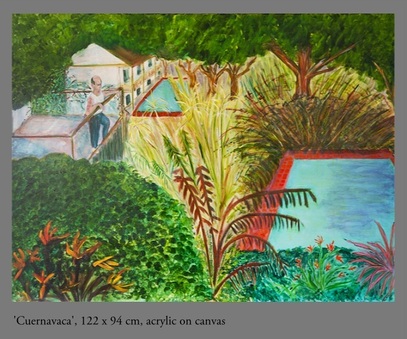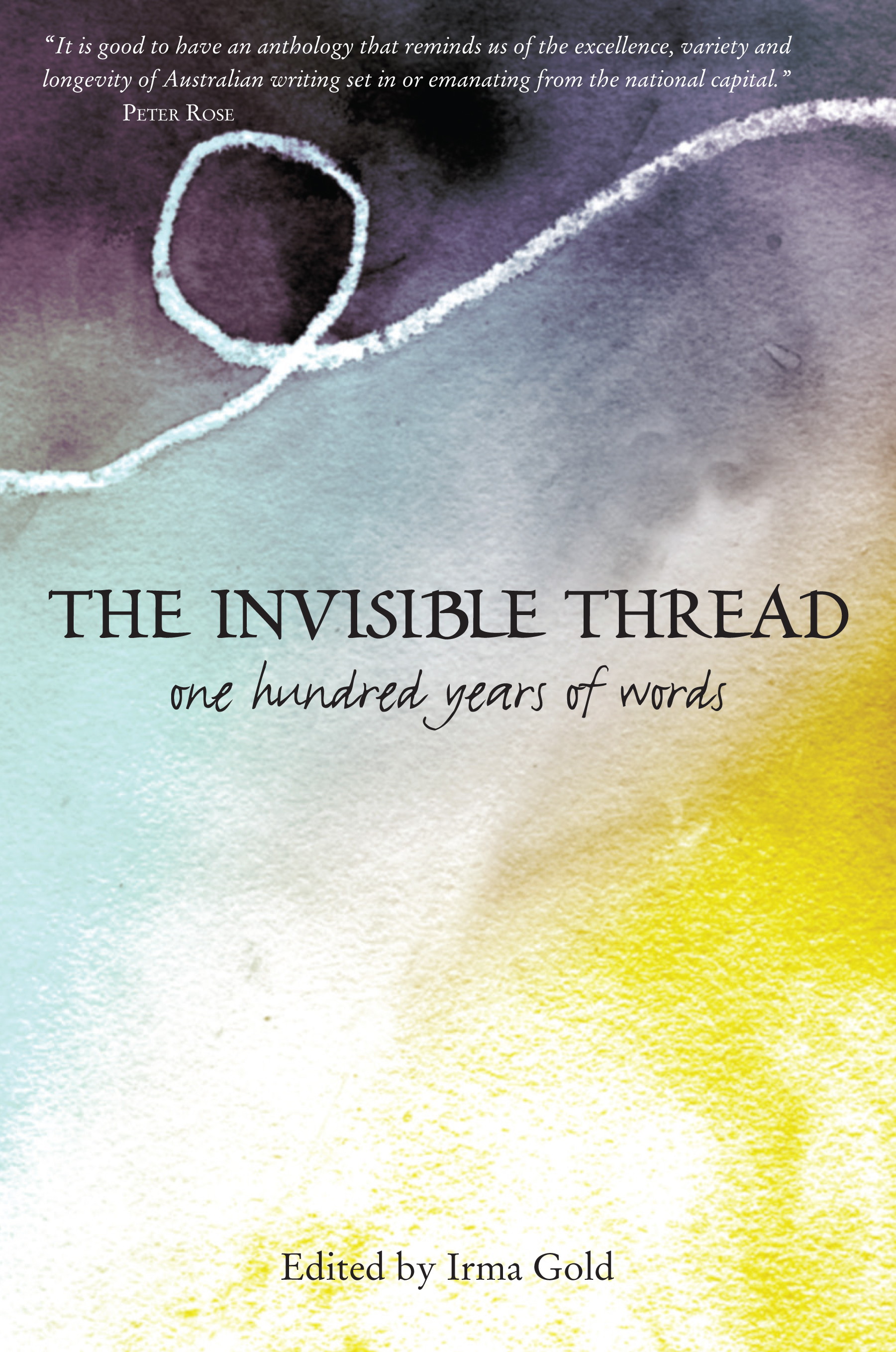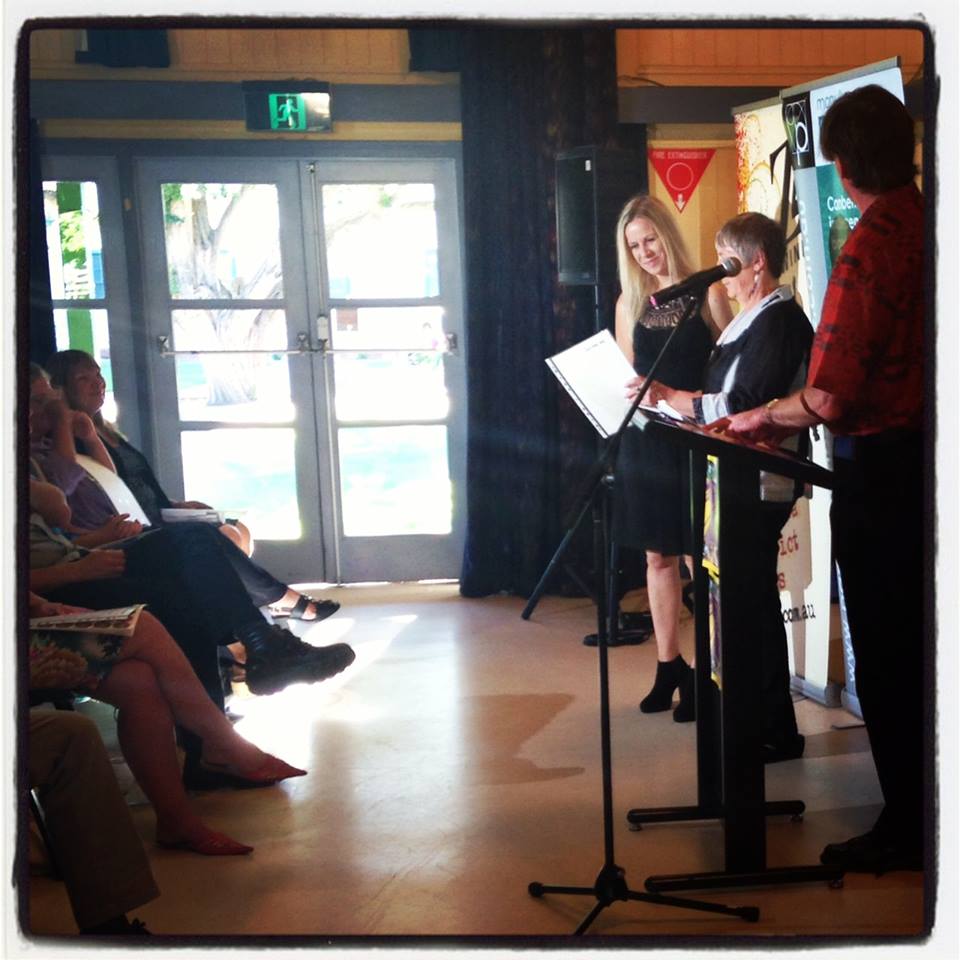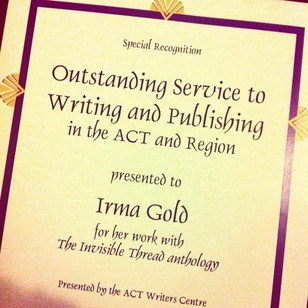Sara Dowse: I was trying to capture the whole complex business of initiation into womanhood. Water is, symbolically speaking, feminine. Hence the pool. Unlike older, more traditional cultures, ours has a paucity of rituals, and those we do have tend to be idiosyncratic. In orthodox Jewish culture, for example, the one that shaped my grandmother and great-grandmother, they had the mikvah — the ritual bath a woman submerged herself after each menstruation, before her wedding and after childbirth. I had experienced nothing remotely like that but, still, somewhere in my unconscious those connections were either being made at the time or at the time of writing. Curious that I used the word ‘baptism’ — which only goes to show how far I removed I am from those strictly orthodox Jewish traditions. In any case, it’s all about sexuality really.
IG: Then back in the hotel you see Ava, the coveted movie star, nude. And what strikes you is how ‘very disappointing’ it is, how she is essentially no different to your mother. This moment had a profound effect on your evolving sense of what it meant to be a woman. How so?
SD: You have to think back to a time when a girl hardly ever saw anyone, even in her own family, in the nude. That’s what it was like in America in the 1940s and 50s, even in a place like Hollywood. You never saw a cleavage and the shortest skirts ended just below the knee. But because of this very suppression we children were terribly curious. And smutty, I guess. That said, I still don’t know quite how to answer the question. Possibly one aspect of it was that, contrary to today’s specifications, I didn’t find Ava’s youthful breasts particularly beautiful. In fact they seemed strange because they weren’t like either my mother’s or stepmother’s, which were those of maturer women. Later, in the 50s, girls like me just wanted to be curvy. And breasts were everything. That’s why we had those bras that shaped them like torpedos. But I suppose the main thing to consider is that becoming a woman was, probably still is, something we had to think about. It was a social construct, it wasn’t something that came ‘naturally’. Still isn’t, when you take all the cosmetic surgery into account. And remember, I was revisiting this event many, many years later. Now I don’t give a damn what breasts are supposed to look like. I am a woman, that’s who I am, and would be even if I didn’t have them.
IG: In your essay you write that every girl needs ‘a woman who will lead her into the adult world, a kind of female Virgil. But Ava was more than that, and less.’
SD: Well, that’s what I’d heard said and it was only when I was writing the essay that it came to me that it might be true. Mother and daughter relationships are complicated, too complicated often. I don’t think a mother can really be a friend to her daughter; a mother is a mother, and she’s unique. But an aunt is an older relative who can support a girl on her journey to adulthood without many strings attached. My own daughter is an aunt to one of my granddaughters in just this way. As for Ava, by dint of her fame I guess she was more than that; even though my sisters and I called her Aunt Ava, as children did in those days, we were of course in awe of her. Movie actors were truly stars then, larger than life to other adults let alone children; and different from the female celebrities we have today. They were goddesses — like the Venus of the title and the role Ava played in the movie of the same name. Think of Marilyn Monroe and then think of Cate Blanchett. Maybe not as rich or savvy or in control because of the studios’ grip on them, but by the same token the studios made women like Ava stars. But that time with her in the pool she was less than that, less than even an aunt. More like a sister, more of a kid herself. ‘Down to earth’ is the term for it — the best I can think of. And funny, that is what happens in the movie.
IG: You moved from Hollywood to Sydney at the age of 19, and then to Canberra in 1968 where you worked as a journalist before becoming the inaugural head of the Women’s Affairs Section of the prime minister department for the Whitlam government. What was that time like, both in political and literary circles?
SD: I should say here that I moved from Los Angeles, not Hollywood. There’s a difference, though they do overlap. The Los Angeles part is every bit as rich as the Hollywood part and had just as great an influence on me — and on my writing. It has coloured my responses to literature and music and, in a way, my fascination with Sydney, which is some respects very like Los Angeles. I was born in Chicago and lived in New York as well. So for 28 years all told I’ve lived in big cities, where I’ve felt spiritually at home. But then there was Canberra, much smaller, and appreciably smaller when I lived there than it is now, and oddly enough those years in Canberra were undoubtedly the most interesting, the most exciting years of my life.
Before I became a public service journalist I worked in publishing and taught professional writing at what was then the Canberra College of Advanced Education, now the University of Canberra. In 1973, I worked on the labour minister’s staff and a year later went to prime minister’s. The section was set up initially to help Elizabeth Reid who was Whitlam’s women’s adviser deal with the huge backlog of correspondence that built up after she asked the women of Australia to write to her about their problems. And boy, did they take her at her word! She ended up getting more correspondence than any government minister except Whitlam himself. Eventually the section took on a substantial policy role, particularly in relation to child care, but we also had our fingers in many other policy pies. It was a very exciting time to be in the public service, a period of long-lasting, long-awaited reform but also political crisis. We hung on through some difficult challenges, most notably the dismissal itself, in order to preserve what had been achieved, and throughout it all the section grew into a branch and then into an office — higher in status but presaging its ousting from prime minister’s. I resigned then to bring this significant but essentially bureaucratic move to public notice. An additional, personal reason was my desire to devote myself, once and for all, to writing.
I really didn’t know the literary scene at all and sometimes thought of this mad career change so late in the day as comparable to Zelda Fitzgerald’s announcing she was bent on becoming a ballerina. It was as exhilarating and at the same time as hopeless, I thought, as that. None of my friends were writers, all my associates were in the women’s movement or in government, and I had recurring dreams about their disapproval. Deep down, I saw it as ‘indulging’ myself. But I couldn’t help it. It was also quite scary. Few of the supports writers have now were available then, and what was there I knew next to nothing about.
IG: In the eighties and nineties you were part of Canberra’s Seven Writers group. Having spoken to fellow members Marion Halligan and Dorothy Johnston about their experiences, I’m interested to know what the group meant to you.
SD: Dorothy Johnston came to Canberra around the time I quit prime minister’s. She heard about me through a mutual friend and got in touch. It was a truly serendipitous meeting, a life-changing one for me. She heard about Margaret Barbalet in much the same way and gradually the three of us got together. Dorothy was the prime mover in this, and it was wonderful to be around someone so dedicated, so positive that something as exhilarating as writing was an authentically important thing to do. It amazes me now to recall that I never dreamt it could or would become a career for me. Nor did I ever imagine that my connection with Seven Writers would come to be better known and possibly more valued than my government work.
After the three of us got together Dorothy put an ad in the Canberra Times and the first tentative groupings were formed. A few months later these coalesced to five of us, Dorothy and Margaret and me, Brenda Walker, who was doing a PhD at ANU, and a woman named Elizabeth Toombs. When Brenda left for Western Australia and Elizabeth to Wales, then Singapore, we were down to the three of us again. That’s when Marian Eldridge, Suzanne Edgar and Marion Halligan joined and, soon after, Dorothy Horsfield. This was in the mid-80s. The group remained as it was until 1998 when I left for Canada. Marian Eldridge had died two years earlier and that kind of kicked the stuffing out of us. We were never quite the same again.
Would I have persisted without the group? I’m not sure. It certainly would have been lonelier and I did learn a lot about the writing craft. But then, as an artist of any kind, you’re always learning. Being in the group meant my work was taken seriously by friendly rivals. That’s what we were, friendly rivals, and we gave each other something no one else could give us, especially as women, especially for that time.
IG: Given that you are both a writer and a painter, how do these two art forms influence each other?
SD: Of course they’re intertwined. But it hasn’t been an easy relationship. For quite a while I agonised over the fact that the time I spent painting was time taken away from writing. I sensed the same disapproval from my writer friends that I’d felt from my politico-academic-public service friends when I started writing. And I kept insisting to myself that painting was only a hobby and that I was entitled to have a hobby just like everyone else had, now that my children were grown and I had the time to have one. But the point was it wasn’t acting like a hobby. It was misbehaving. It was demanding. It was as insistent as the writing was. They both are, and it can be bloody exhausting. And I wasn’t getting any younger and none of it was making me much money. And then I said, the hell with it, I am who I am and I’m going to have to live with it. And enjoy it. That’s been the hardest part, all through my life, not feeling guilty about enjoying myself. (It comes in the Jewish package — along, thank god, with the laughs.)
 Do my art forms feed each other? Definitely. Two of my biggest paintings are of swimming pools. This is because of the amazing view from the windows of our Sydney flat. Towards the east we see North Harbour, Manly, and the ocean beyond. But turning northwards we look down onto swimming pools, one after another, like a sparkling chain of turquoise flung over the fences and into the suburban yards. And it reminded me of John Cheever’s story ‘The Swimmer’ in which Neddy Merrill crosses his neighbourhood by swimming in one pool after the other, swimming as he does into the mistakes of his past. It’s a classic rendition, maybe the classic rendition, of suburban failure and loneliness, and was made into a fine movie with Burt Lancaster in the role of Neddy, arguably one of his best. So I started painting these scenes and two big ones that will be on show at Woven Words came out of this process. The first I did indeed call ‘The Swimmer’ but the second, painted a few years later, morphed into something else.
Do my art forms feed each other? Definitely. Two of my biggest paintings are of swimming pools. This is because of the amazing view from the windows of our Sydney flat. Towards the east we see North Harbour, Manly, and the ocean beyond. But turning northwards we look down onto swimming pools, one after another, like a sparkling chain of turquoise flung over the fences and into the suburban yards. And it reminded me of John Cheever’s story ‘The Swimmer’ in which Neddy Merrill crosses his neighbourhood by swimming in one pool after the other, swimming as he does into the mistakes of his past. It’s a classic rendition, maybe the classic rendition, of suburban failure and loneliness, and was made into a fine movie with Burt Lancaster in the role of Neddy, arguably one of his best. So I started painting these scenes and two big ones that will be on show at Woven Words came out of this process. The first I did indeed call ‘The Swimmer’ but the second, painted a few years later, morphed into something else.
I now belong to an artists’ studio not far from the flat and not dissimilar from Seven Writers in that it’s made up of women and we’re all very close and supportive of each other, even though there’s that implicit, unavoidable sense of rivalry, especially among the painters. But I share my own studio space with a young Mexican filmmaker who observed when I was working on the second painting that it looked just like Cuernavaca where her grandmother lived and she spent her childhood vacations. So there it was, ‘Cuernavaca’. But come to think of it, it could have been that first pool — the one I swam in with Ava.
IG: At the Woven Words event we’ve asked you to combine literature with a different art form by selecting two musical compositions to bookend a reading of ‘One Touch of Venus’. How did you go about selecting these works? Can you take us through your thinking process?
SD: I can’t tell you how much delight I had in choosing the music for the reading. Thanks to the Net, I was able to watch One Touch of Venus online. And because of this, I hit on something that over the years I had completely forgotten — that one of the most beautiful songs ever written was part of the soundtrack. The movie, which came out in 1948, was originally a 1943 Broadway musical with Mary Martin in the Venus role, and Martin was the first to sing it. The music was Kurt Weill’s and the lyrics were by Ogden Nash, a favourite poet of my childhood, the one who wrote hilarious things like ‘hand me down my rusty hatch et, someone murmured do not scratch it’ and ‘a wonderful bird is the pelican, his beak can hold more than my belly can’. But he was more than a nonsense poet and for the opening of this song he drew on a line of Don Pedro’s from Much Ado About Nothing. ‘Speak Low’ has been sung by everyone from Billy Holiday and Frank Sinatra to Tony Bennett and Nora Jones. It is truly a classic. Ever since I heard it again I can’t get it out of my head. And I’m so glad someone as great as Chanel Cole will be singing it on the night.
et, someone murmured do not scratch it’ and ‘a wonderful bird is the pelican, his beak can hold more than my belly can’. But he was more than a nonsense poet and for the opening of this song he drew on a line of Don Pedro’s from Much Ado About Nothing. ‘Speak Low’ has been sung by everyone from Billy Holiday and Frank Sinatra to Tony Bennett and Nora Jones. It is truly a classic. Ever since I heard it again I can’t get it out of my head. And I’m so glad someone as great as Chanel Cole will be singing it on the night.
The second song, ‘Old Devil Moon’, comes from the 1947 musical Finian’s Rainbow. Burton Lane composed it, with lyrics by Yip Harburg. I saw the musical as a kid in New York before moving out to California. My mother was friends with Ella Logan, the star, and her husband Freddie Finkelstein who produced it, and we went backstage to meet them. Believe it or not, as a kid of six I could sing every song in it, even getting my tiny lungs around ‘How are Things in Gloccamorra’. But ‘Old Devil Moon’ is a ballad, very powerful, very sexy, the one that everyone knew Sinatra sang about Ava.
Woven Words is on 27 April at 7.30 pm. Writers Alex Miller and Alan Gould will also read their work, and Sara’s artwork will grace the walls. The authors have chosen a mix of contemporary piano, funky jazz, classical string works, and flamenco guitar to be performed by a quartet from the Canberra Symphony Orchestra. For more to details or to purchase tickets you can visit the website here or Facebook page here.
 Some days everything falls in a heap, and that’s what happened to me yesterday. Plans went awry and I scrambled to get to the announcement of the ACT Writing and Publishing Awards. I arrived as they were announcing the last award. Massive fail. Most particularly because they had created a special award just for me. And I missed it.
Some days everything falls in a heap, and that’s what happened to me yesterday. Plans went awry and I scrambled to get to the announcement of the ACT Writing and Publishing Awards. I arrived as they were announcing the last award. Massive fail. Most particularly because they had created a special award just for me. And I missed it. tre Board and staff, particularly Director Kelli-Anne Moore, who provided me with admin support (and much-needed moral support on many occasions).
tre Board and staff, particularly Director Kelli-Anne Moore, who provided me with admin support (and much-needed moral support on many occasions).





